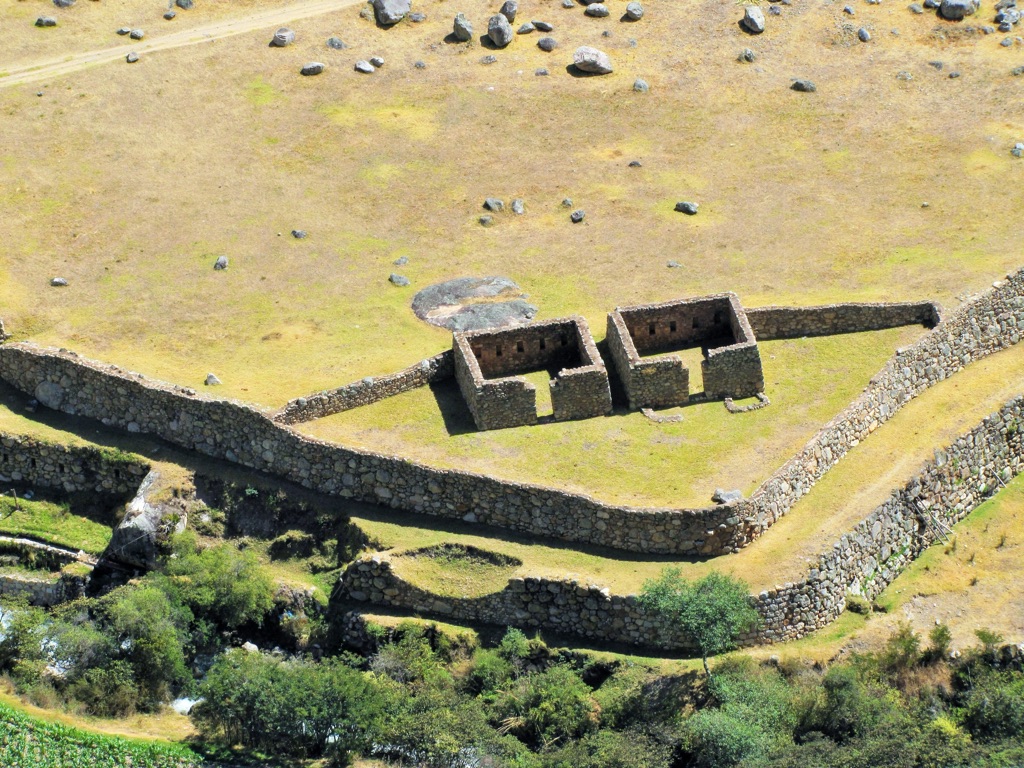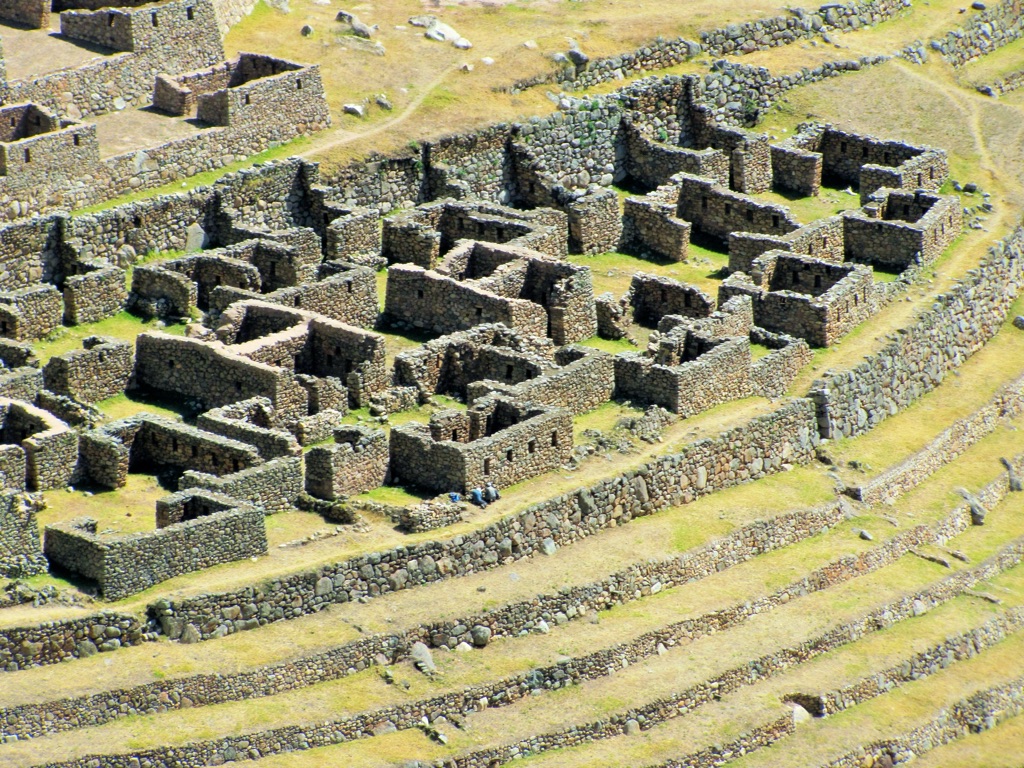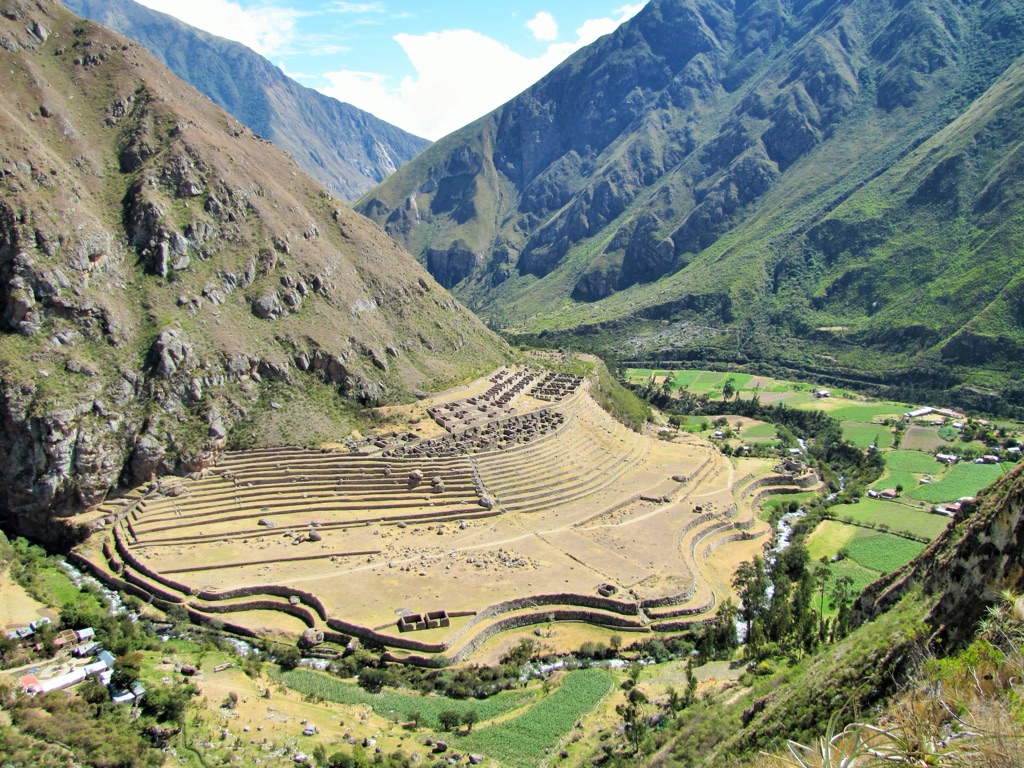Patallacta, also known as Llaqtapata, is a significant archaeological site located in the Cusco Region of Peru. Nestled in the Sacred Valley of the Incas, it lies on the ancient Inca trail leading to the iconic Machu Picchu. This site is believed to have been a thriving settlement and an administrative and ceremonial center. Its well-preserved ruins offer a glimpse into the Inca civilization’s sophisticated urban planning and agricultural practices. Patallacta’s terraces that cascade down the hillside are a testament to the Inca’s mastery of their environment, showcasing their ability to adapt and cultivate crops in challenging mountainous terrain.
Get your dose of History via Email
Historical Background of Patallacta
Patallacta was discovered in 1912 by the American historian Hiram Bingham, who is also credited with bringing Machu Picchu to international attention. The site was built by the Incas, a civilization that flourished in the Andean region from the 13th to the 16th century. Patallacta served as a checkpoint for those approaching Machu Picchu and was likely an important agricultural hub. It was inhabited by the Incas until the Spanish conquest in the 16th century. After the fall of the Inca Empire, the site was abandoned and remained untouched until its rediscovery.

The construction of Patallacta reflects the Inca’s advanced architectural skills. They built this settlement on a series of terraces carved into the hillside, a common feature in Inca urban design. The terraces not only supported agriculture but also helped prevent erosion and landslides. The Incas used local materials, such as stone, to construct the buildings and walls that remain standing today. The site’s strategic location along the Inca trail indicates its importance in the empire’s network of roads and settlements.
Patallacta has not been the scene of any known historically significant events, such as battles or royal decrees. However, its existence and function within the Inca Empire contribute to our understanding of Inca society. The settlement’s proximity to Machu Picchu suggests that it may have played a role in supporting the famous mountaintop citadel, possibly providing food and shelter for travelers or serving as a religious outpost.
While Patallacta itself may not have been the backdrop for dramatic historical events, its discovery has been crucial in piecing together the daily lives of the Inca people. The site offers insights into the Inca’s agricultural practices, as the terraces are still visible and in some cases, still in use today. The layout of the settlement, with its residential and ceremonial areas, sheds light on the social and cultural aspects of Inca life.
Today, Patallacta is an important stop for trekkers on the Inca Trail. It provides a vivid example of Inca urban planning and agricultural ingenuity. As a part of the Machu Picchu Historical Sanctuary, Patallacta is protected under Peruvian law and is recognized by UNESCO as part of the cultural heritage of humanity. Its preservation allows for ongoing study and appreciation of the Inca civilization’s complexities.

About Patallacta
Patallacta is a testament to the Inca’s architectural prowess and their harmonious relationship with nature. The site consists of over one hundred buildings, including houses, storage structures, and religious spaces. These structures are organized into groups, with each group likely serving a distinct function within the community. The buildings are predominantly made of fieldstones, which are stones collected from the surrounding area, and are laid out in a trapezoidal shape, a hallmark of Inca architecture.
The terraces of Patallacta are one of its most striking features. They demonstrate the Inca’s advanced understanding of agriculture and irrigation. The terraces were constructed by creating retaining walls filled with fertile soil, allowing for the cultivation of various crops at different altitudes. This technique maximized the arable land area and supported a stable food supply for the inhabitants.
In addition to the terraces, Patallacta’s design includes a sophisticated water distribution system. Channels and fountains provided fresh water to the residents, a luxury in the arid Andean environment. This system highlights the Inca’s ability to manage water resources effectively, ensuring the sustainability of their settlements.
The layout of Patallacta also reflects the Inca’s social organization. The site is divided into sectors, with a clear distinction between residential areas, storage facilities, and spaces for ceremonial activities. This separation indicates a structured community with designated areas for different aspects of daily life.
Despite the passage of time, Patallacta’s ruins remain well-preserved, offering a window into the past. The site’s remote location and the fact that it was not destroyed by the Spanish conquistadors have helped to keep it intact. Today, Patallacta is not only a historical site but also a cultural symbol, representing the Inca’s ingenuity and their enduring legacy in the Andean region.
Theories and Interpretations
Several theories exist about the purpose of Patallacta. Some scholars suggest it was primarily an agricultural settlement, supporting the nearby Machu Picchu with food supplies. Others believe it had a religious significance, serving as a pilgrimage site or a place for ritual activities. The presence of ceremonial buildings lends some weight to this theory.
There are mysteries surrounding Patallacta, particularly regarding its role in the broader Inca Empire. While it is clear that the site was connected to Machu Picchu via the Inca trail, the exact nature of this connection is still debated. Some propose that Patallacta was a rest stop for travelers, while others argue it was a more permanent settlement with its own administrative functions.
Interpretations of Patallacta have been matched to historical records where possible. The Inca did not have a written language, so much of what is known comes from archaeological evidence and accounts from the Spanish conquistadors. This has led to some speculation and differing opinions among historians and archaeologists.
Dating of Patallacta has been carried out using methods such as carbon-14 dating and analysis of ceramic styles. These techniques have helped establish a timeline for the settlement’s occupation and use. However, the exact dates of construction and abandonment are still subject to ongoing research and debate.
The study of Patallacta is a dynamic field, with new discoveries and interpretations emerging as archaeological techniques advance. Each new piece of evidence adds to the understanding of this complex site and its place in Inca history. The ongoing research at Patallacta continues to reveal the sophistication of the Inca civilization and their remarkable achievements.
At a glance
- Country: Peru
- Civilization: Inca
- Age: 15th century AD
Conclusion and Sources
- Wikipedia – https://en.wikipedia.org/wiki/Patallacta

